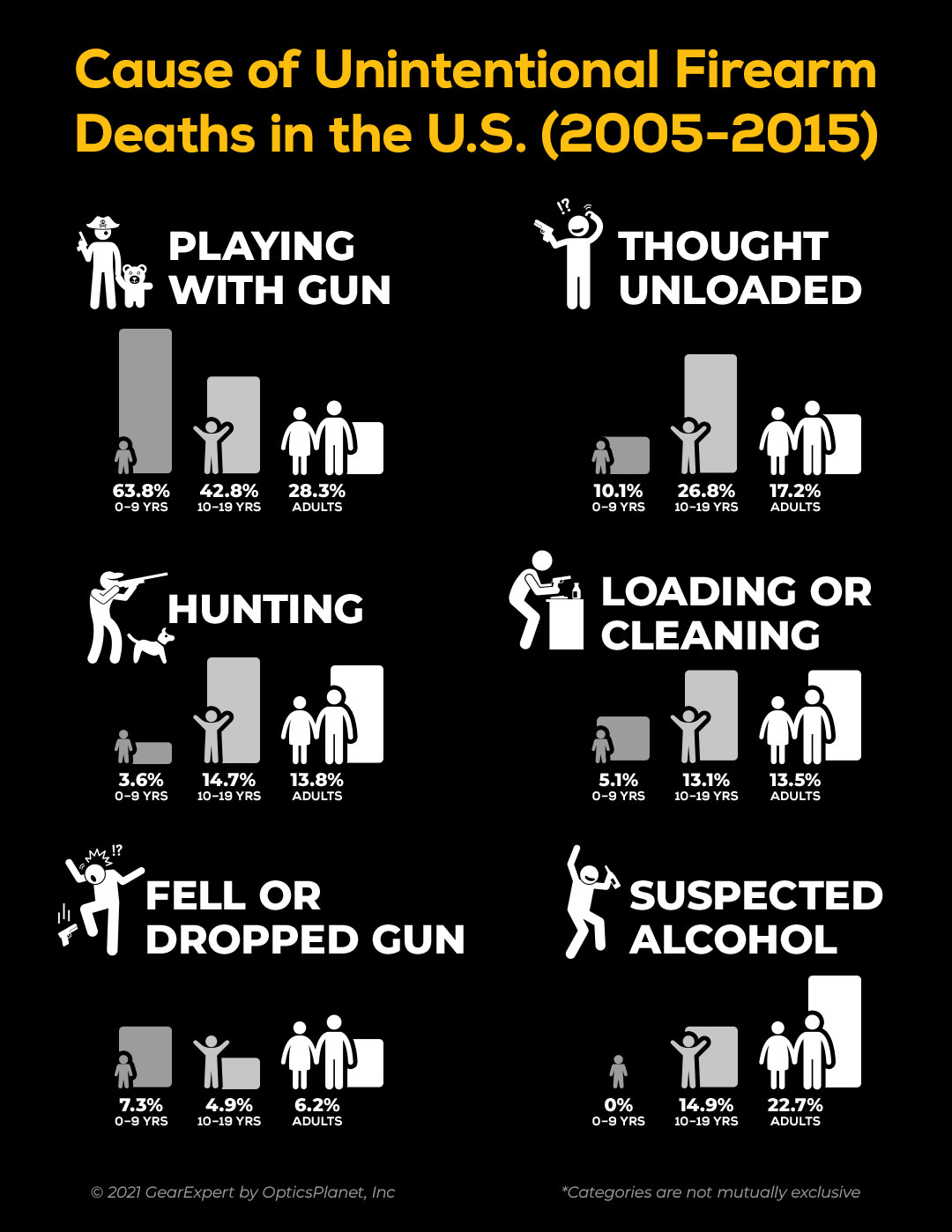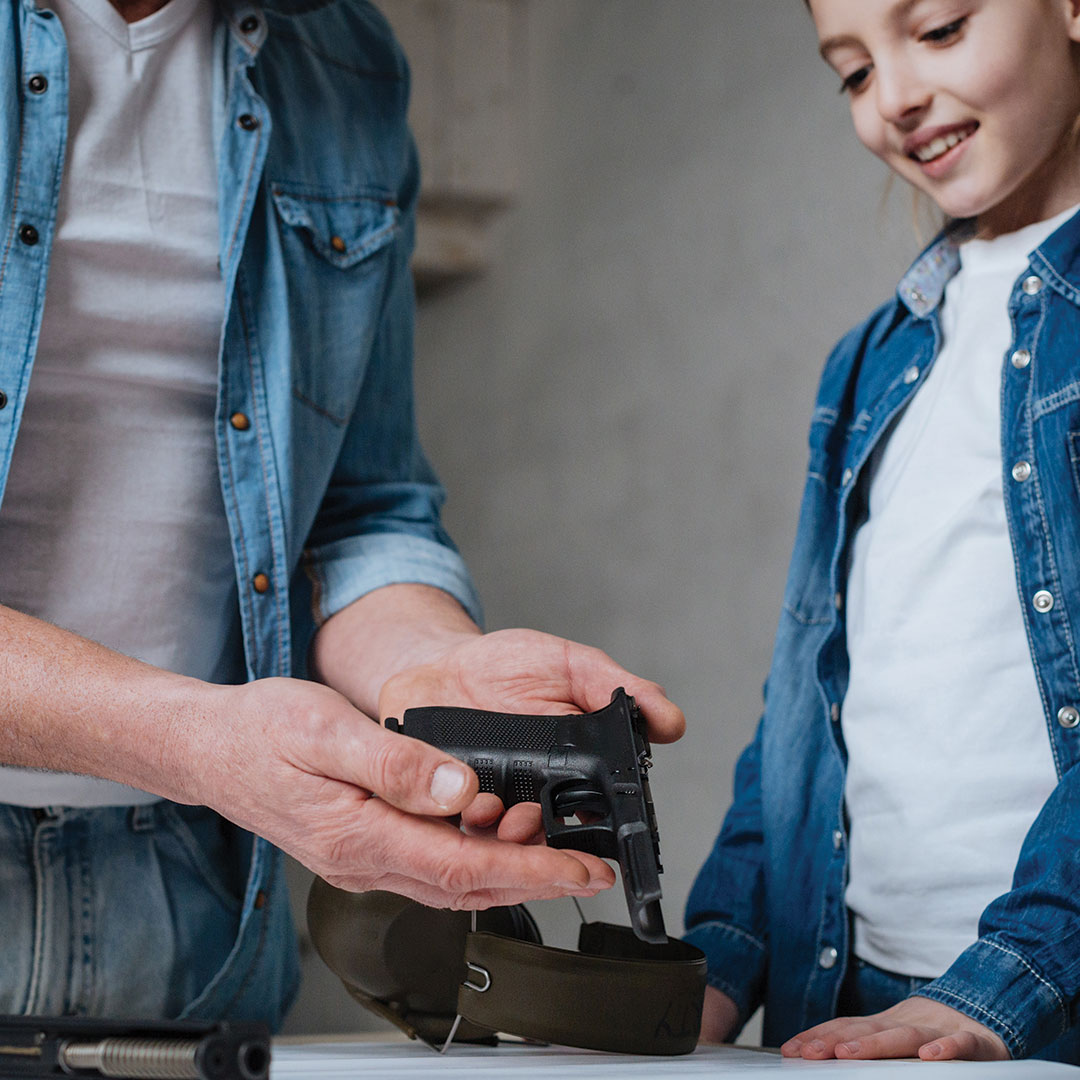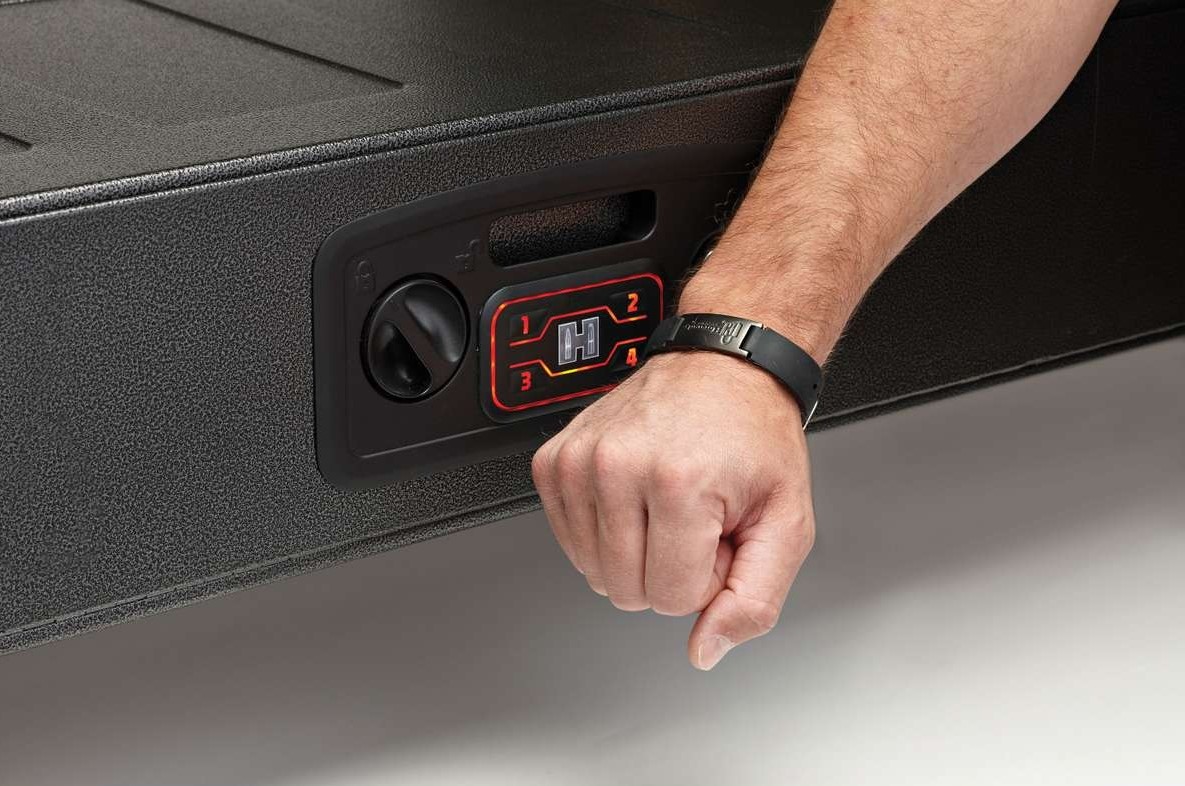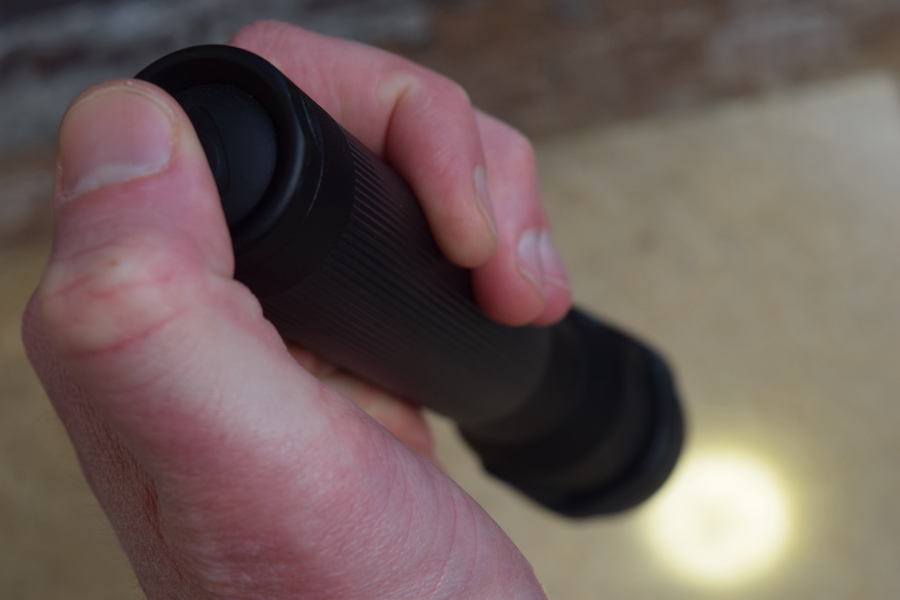Gun Safety at Home: How to Childproof Your Guns
Responsible firearm owners know that practicing gun safety at home is a top priority, especially for families with kids. Many people keep guns in the house to protect their loved ones, but if you don’t practice proper gun safety at home, those weapons designed for defense become a major threat.
A study on unintentional firearm deaths (2000-2015) revealed that an estimated 430 firearm fatalities occur in the U.S. every year.
- The rate is highest for older children to young adults (ages 10-29)

- 28.3% were “playing with the gun”
- 17.2% “thought it was unloaded”
The study also found that these incidents most commonly occur in their own home or a friend’s, indicating that proper firearm safety and storage could have prevented such tragic loss.
At only 3 years old, most children possess the strength to pull the trigger, but “childproofing” your weapons doesn’t just pertain to young kids. You need to safeguard your guns from all youth who are not ready to bear the responsibilities of firearms.
This guide on firearm safety at home will teach you how to effectively childproof your weapons and showcases safety products that you should consider using. After reading, you will be able to store a shotgun, pistol, rifle, crossbow, or other weapons safely at home and away from children.
Gun Safety for Kids
While gun locks and childproof safes are a must, the first step to safely keep a firearm in your home is to educate your children about gun safety. The 4 Rules of Firearm Safety provide a great starting point covering the basic rules of how to treat and handle any firearm. However, educating your children about guns isn’t always easy, and there are some other talking points to consider.
Kids are fueled by curiosity. If you own a weapon, it may be in your best interest to have a discussion about guns rather than hiding the fact that you own one. You obviously don’t need to tell them what you own exactly or where you keep it, but hiding that fact will only increase their curiosity and desire to explore restricted areas of your home.
Just because you didn’t tell your kids if you have a gun or where it is doesn’t mean that they don’t know. In fact, children under the age of 10 are just as likely as older children to know where household firearms are stored. Kids are smarter than we sometimes give credit for, and teaching them about gun safety at home is one of the best tools at our disposal.
Teach them about the dangers of firearms and how they are not toys. Children are exposed to guns in movies, video games, TV, etc. You must ensure they learn that real-life firearms are dangerous items and must be respected as such. The goal is to educate your children about firearms, teach them safety procedures, and ensure they know that guns are to be handled by responsible and trained owners. In the end, they should respect guns and what they’re capable of, not fear them entirely.
How to Safely Store Guns at Home
Safely storing your firearms is crucial for practicing gun safety at home. Before you physically childproof your weapons, think about the safest place to store them. Ask yourself these questions before finding a spot:
- Where do they play?
- What areas can they access?
- Do you want your gun nearby for home defense?
Don’t assume your children can’t access a certain area because of height or standard locks. Kids view shelves like indoor rock climbing, and step stools can always give them a boost. Truly dig deep while thinking about the safest storage location to ensure all of your bases are covered.
If you own a gun for home defense, then you’ll want it nearby. The master bedroom is ideal since you’ll be able to closely monitor your firearms at night while still having quick access to them.
Gun Safety Tips for Parents
After teaching your kids about gun safety at home and selecting a safe storage location, it’s time to discuss how to childproof your guns. Education is essential but not enough to guarantee your guns stay out of your kids’ hands. You need to physically childproof your firearms to ensure a 0% possibility of them accessing it and firing a live round. That includes keeping all firearms unloaded and decocked and checking chambers to make sure your guns are 100% unloaded.
childproof your guns. Education is essential but not enough to guarantee your guns stay out of your kids’ hands. You need to physically childproof your firearms to ensure a 0% possibility of them accessing it and firing a live round. That includes keeping all firearms unloaded and decocked and checking chambers to make sure your guns are 100% unloaded.
Another recommendation is to securely store ammunition in a separate area. This can be another safe or lockable storage container. This adds an extra layer of protection by further reducing the possibility of your children accessing a loaded gun. Understandably, you want to have a loaded firearm at the ready for personal protection, but that presents more of a danger than it prevents with children in the house.
Childproof Gun Safes and Trigger Locks
With all the steps in place to safely own a firearm at home, it’s time to pick out the best childproof gun storage based on your needs and budget. It’s important to remember that gun safes and lockable storage containers are just a deterrent from accessing your weapons. Just because your guns are locked away doesn’t mean that you still shouldn’t follow the points above.
Childproof Trigger Locks
Before we discuss gun safes, let’s talk about trigger locks. Trigger locks, or gun locks, add an extra layer of security to prevent the activation of a firearm. They go on to your weapon first before you put your guns in the safe.
There are three main types of trigger locks: 
- Biometric (fingerprint) trigger locks
- Keyed trigger locks
- Combination trigger locks
Any of these choices work, but for keyed and combination locks, you need to protect the key and combination like it’s your actual weapon. If your children get their hands on the method of unlocking the device, your trigger lock is null and void. While trigger locks are recommended for childproofing your guns, they are not a substitute for a gun safe.
Childproof Gun Safes
While shopping for a childproof gun safe, you need to consider where you’ll put it, what size you need, and what features you want. If you plan on keeping your gun safe in the master bedroom, which is an ideal location for families, you have a few options at your disposal. The bedroom closet is a good place to keep a gun safe as it is spacious and easy to hide from kids, even if they’re in your room (while supervised, of course).
Another option is a wall safe. Wall gun safes usually require more work to install, but they can be easily hidden. Another benefit of wall safes is that you can place them at certain heights that would be near impossible for children to reach. 
If you can easily keep your kids out of your bedroom, a bed safe secures your gun while allowing the quickest access to it in an emergency. These can be under the bed gun safes or nightstand gun safes, also known as bedside gun safes.
Choosing the right size gun safe can be challenging for new gun owners, but it’s pretty easy to figure out once you know how many guns you’re storing, if they’re long guns or handguns, and what else you plan to store in it. The amount of gun safe features are also overwhelming at times, but this guide on Choosing the Best Gun Safe for the Money has tons of helpful information and instructional videos about picking out a gun safe, moving a gun safe, and storing a safe. Check it out if you want to learn more about gun safes before buying one to practice gun safety at home.
Some other types of gun safes for childproofing your weapons include RFID gun safes, biometric gun safes, and car gun safes. RFID (Radio Frequency Identification) safes are accessed with a chip, usually hidden in a fob card or bracelet. Like we discussed with certain gun locks, if your kids get a hold of the chip method, they can access your safe. Thankfully, RFID chips are easy to keep close by and on your person. If you’re mindful about the chip’s location at all times, then RFID gun safes are a good choice for you since they also provide quick access to your weapon when needed. Hornady RAPiD gun safes are a popular choice if you want RFID access.
gun safes. RFID (Radio Frequency Identification) safes are accessed with a chip, usually hidden in a fob card or bracelet. Like we discussed with certain gun locks, if your kids get a hold of the chip method, they can access your safe. Thankfully, RFID chips are easy to keep close by and on your person. If you’re mindful about the chip’s location at all times, then RFID gun safes are a good choice for you since they also provide quick access to your weapon when needed. Hornady RAPiD gun safes are a popular choice if you want RFID access.
Car gun safes are great because you can lock your car for further security (just keep the keys out of reach). However, they do not provide quick access during nighttime emergencies, and they are not ideal if other people in the household use your car, especially teens who just got their license. 
If you have some extra room in the budget, biometric gun safes, or fingerprint gun safes, provide the best balance of security and quick access to your weapon. Some brands like Vaultek have Wi-Fi-enabled child-proof biometric safes that you can monitor to see if your children attempt to access it while you’re away.
Play It Safe
When it comes to gun safety at home, you should protect your family and never take any risks. By now, you should know several ways to childproof your guns and how talk to your children about firearm safety. Remember, whether you’re looking for a pistol, rifle, or shotgun safe, keeping your guns out of your kids’ hands is the number one priority. Your next step is finding a safe that meets your gun ownership needs.
Hopefully, this guide will help all you parents out there who want to safely store a firearm at home with children. If you have any unique childproofing tips or advice on talking to your kids about guns, share them with us in the comments below!
Read More



















